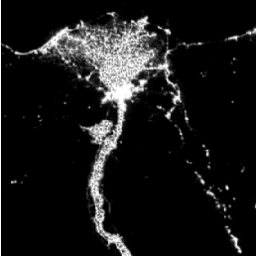-
CCNL: ชุดข้อมูลแสงกลางคืนที่สอดคล้องและแก้ไขแล้วจาก DMSP-OLS (1992-2013) v1

ชุดข้อมูลแสงไฟกลางคืนที่สอดคล้องกันและได้รับการแก้ไข (CCNL) เป็นเวอร์ชันที่ประมวลผลใหม่ของระบบสแกนแบบเส้น (OLS) เวอร์ชัน 4 ของโปรแกรมอุตุนิยมวิทยาของกระทรวงกลาโหม (DMSP) เราใช้วิธีการต่างๆ เพื่อลดผลกระทบของความไม่สอดคล้องกันระหว่างปี ความอิ่มตัว และเอฟเฟกต์การขยายตัว รวมถึงปรับปรุงข้อมูล … dmsp eog imagery lights nighttime ols -
DMSP OLS: Global Radiance-Calibrated Nighttime Lights Version 4, Defense Meteorological Program Operational Linescan System

ระบบสแกนแบบเส้น (OLS) ที่ใช้งานได้ของโปรแกรมอุตุนิยมวิทยาของกระทรวงกลาโหม (DMSP) มีความสามารถเฉพาะตัวในการตรวจจับแหล่งกำเนิดการปล่อยรังสีที่มองเห็นได้และรังสีอินฟราเรดใกล้ (VNIR) ในเวลากลางคืน คอลเล็กชันนี้มีรูปภาพแสงไฟยามค่ำคืนทั่วโลกที่ไม่มีการอิ่มตัวของเซ็นเซอร์ โดยปกติแล้ว เซ็นเซอร์จะทำงานที่การตั้งค่าเกนสูงเพื่อให้ … dmsp eog imagery lights nighttime ols -
DMSP OLS: ชุดข้อมูลอนุกรมเวลาของแสงเวลากลางคืน เวอร์ชัน 4, Defense Meteorological Program Operational Linescan System

ระบบสแกนแบบเส้น (OLS) ที่ใช้งานได้ของโปรแกรมอุตุนิยมวิทยาของกระทรวงกลาโหม (DMSP) มีความสามารถเฉพาะตัวในการตรวจจับแหล่งกำเนิดการปล่อยรังสีที่มองเห็นได้และรังสีอินฟราเรดใกล้ (VNIR) ในเวลากลางคืน อนุกรมเวลาของแสงกลางคืน DMSP-OLS เวอร์ชัน 4 ประกอบด้วยคอมโพสิตที่ไม่มีเมฆซึ่งสร้างขึ้นโดยใช้ความละเอียดที่ราบรื่นของ DMSP-OLS ที่เก็บถาวรทั้งหมดที่มีอยู่ … dmsp eog imagery lights nighttime ols -
VIIRS Nighttime Day/Night Annual Band Composites V2.1

ชุดข้อมูลแสงกลางคืน VIIRS ทั่วโลกรายปีเป็นอนุกรมเวลาที่สร้างขึ้นจากตารางความสว่างเฉลี่ยรายเดือนที่ไม่มีเมฆปกคลุมตั้งแต่ปี 2013 ถึง 2021 ข้อมูลสำหรับปี 2022 จะอยู่ในชุดข้อมูล NOAA/VIIRS/DNB/ANNUAL_V22 ขั้นตอนการกรองเริ่มต้นจะนำพิกเซลที่มีแสงอาทิตย์ แสงจันทร์ และเมฆออก ซึ่งทำให้เกิดภาพคอมโพสิตคร่าวๆ ที่ … annual dnb eog lights nighttime noaa -
VIIRS Nighttime Day/Night Annual Band Composites V2.2

ชุดข้อมูลแสงไฟกลางคืน VIIRS ทั่วโลกรายปีเป็นอนุกรมเวลาที่สร้างขึ้นจากตารางความสว่างเฉลี่ยรายเดือนที่ไม่มีเมฆสำหรับปี 2022 ข้อมูลสำหรับปีก่อนๆ จะอยู่ในชุดข้อมูล NOAA/VIIRS/DNB/ANNUAL_V21 ขั้นตอนการกรองเริ่มต้นจะนำพิกเซลที่มีแสงแดด แสงจันทร์ และเมฆออก ทำให้ได้ภาพคอมโพสิตคร่าวๆ ที่มี … annual dnb eog lights nighttime noaa -
VIIRS Nighttime Day/Night Band Composites เวอร์ชัน 1

ภาพคอมโพสิตความสว่างเฉลี่ยรายเดือนโดยใช้ข้อมูลเวลากลางคืนจาก Visible Infrared Imaging Radiometer Suite (VIIRS) Day/Night Band (DNB) เนื่องจากข้อมูลเหล่านี้ได้รับการคอมโพสิตรายเดือน จึงมีหลายพื้นที่ทั่วโลกที่ไม่สามารถรับข้อมูลที่มีคุณภาพดีสำหรับเดือนนั้นๆ ได้ … dnb eog lights monthly nighttime noaa -
VIIRS Stray Light Corrected Nighttime Day/Night Band Composites Version 1

ภาพคอมโพสิตความสว่างเฉลี่ยรายเดือนโดยใช้ข้อมูลเวลากลางคืนจาก Visible Infrared Imaging Radiometer Suite (VIIRS) Day/Night Band (DNB) เนื่องจากข้อมูลเหล่านี้ได้รับการคอมโพสิตรายเดือน จึงมีหลายพื้นที่ทั่วโลกที่ไม่สามารถรับข้อมูลที่มีคุณภาพดีสำหรับเดือนนั้นๆ ได้ … dnb eog lights monthly nighttime noaa
